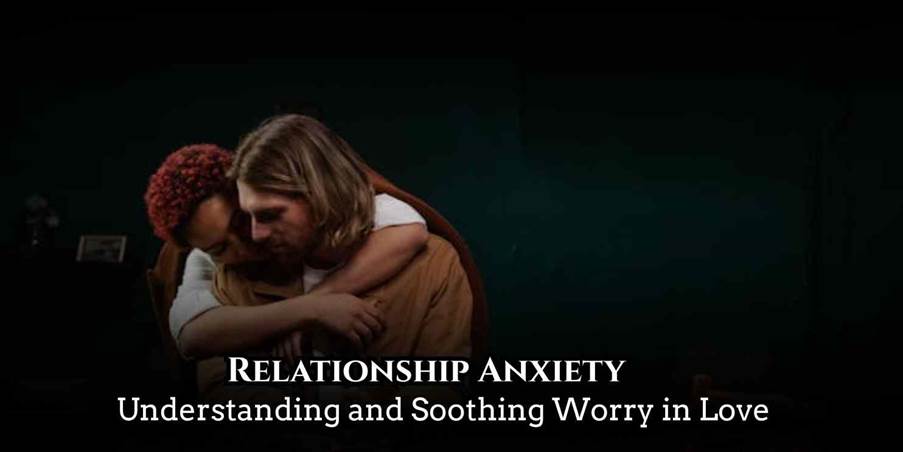Relationship anxiety is a common emotional experience that shows up as fear, worry, or uncertainty about your connections with partners. Whether it appears as fear of abandonment, overthinking in relationships, or trust issues, relationship anxiety affects how people communicate, feel safe, and build intimacy. This article explains what relationship anxiety is, why it develops, how it shows up in everyday life, and practical ways to cope using communication skills, therapy, and self-care. You’ll learn about attachment styles like the anxious attachment style, signs such as clingy behavior or emotional overthinking, and evidence-based steps for rebuilding trust, improving healthy communication, and moving toward secure attachment.
Table of Contents

What is relationship anxiety?
Definition and roots
Relationship anxiety refers to persistent worry about a romantic relationship’s stability or one’s partner’s feelings. It often stems from early attachment experiences, past breakups, or inconsistent caregiving that create attachment issues and emotional vulnerability. People with relationship anxiety may fear intimacy, have fear of rejection, or struggle with fear of losing a partner.
How attachment and cognition play a role
Attachment patterns secure, anxious, avoidant, or disorganized influence how people respond to closeness. An anxious attachment style typically shows as heightened sensitivity to perceived slights and frequent requests for emotional reassurance. Cognitive patterns like catastrophizing and rumination lead to overthinking in relationships and amplify doubts.
Common signs and effects
Behavioral and emotional indicators
Signs of relationship anxiety include:
• Persistent relationship doubts and worry in relationships
• Clingy behavior or excessive seeking of reassurance
• Communication problems marked by over-texting or misreading messages
• Emotional swings, jealousy, or relationship stress
Impact on partners and the relationship
Unchecked anxiety often creates relationship insecurity and triggers trust issues. Partners may respond with confusion or withdrawal, which can lead to patterns of codependent relationships or repeated conflict. Over time, anxiety can erode intimacy and increase relationship fear rather than reducing it.
Triggers and contributing factors
Common anxiety triggers
People experience spikes in relationship anxiety due to breakups, perceived distance, or life stressors like job loss. Social media and comparisons cause fear of intimacy and insecurity; seeing a partner interact online may provoke fear of abandonment or fear of rejection.
Mental health and relational context
Co-occurring issues such as low self-esteem issues, depression, or generalized anxiety can exacerbate romantic insecurity. Substance use, unresolved trauma, or previous betrayal makes rebuilding trust harder and increases the need for relationship counseling or therapy.
Related article: Othello Syndrome: Understanding Delusional Jealousy in Relationships
Healthy strategies to manage relationship anxiety
Individual coping skills
Managing relationship anxiety begins with self-awareness and emotional regulation. Helpful techniques include:
• Practicing mindfulness in relationships to notice thoughts without reacting
• Developing emotional self-awareness to name triggers and sensations
• Using grounding practices and breathing to reduce immediate panic
These practices reduce emotional overthinking and support clearer decisions.
Communication and relational tools
Strong communication is crucial to reduce misunderstandings and build relationship satisfaction online or offline. Try:
• Expressing needs calmly and specifically rather than demanding reassurance
• Using “I” statements to avoid blame and encourage healthy communication
• Scheduling regular check-ins to address relationship uncertainty
Clear, compassionate dialogue reduces relationship stress and fosters secure attachment.
Professional help and therapy
When anxiety is intense or persistent, relationship therapy or individual counseling helps. Therapies like cognitive behavioral therapy address overthinking in relationships and anxiety management, while attachment-focused therapy works on core attachment issues. Couples therapy supports rebuilding trust and resolving communication problems.

Building secure, resilient relationships
Strengthening trust and intimacy
Trust grows when partners are reliable, honest, and responsive. To nurture trust and reduce relationship insecurity:
• Keep promises and be consistent in small actions
• Share vulnerabilities gradually to build emotional intimacy
• Validate each other’s feelings and provide emotional reassurance when needed
These actions counteract fear of abandonment and help move toward a secure attachment.
Long-term habits for wellbeing
Sustainable change comes from daily practices:
• Maintain individual hobbies and friendships to reduce emotional dependency
• Practice self-care and address self-esteem issues through positive routines
• Seek community or peer support to normalize experiences and learn coping strategies
Over time, these habits reduce relationship doubts and promote emotional balance.
When to seek help
If worry interferes with sleep, work, or daily functioning, or if anxiety leads to controlling or abusive patterns, professional help is strongly recommended. Relationship counseling, trauma-informed therapy, and support groups provide structured guidance for coping and healing.
Conclusion
Relationship anxiety is painful but treatable. Recognizing signs like clingy behavior, overthinking in relationships, or chronic relationship stress is the first step. With emotional self-awareness, healthy communication, mindfulness, and, when needed, therapy, people can reduce fear, improve connection, and move toward secure attachment. If anxiety keeps you stuck, reach out to a mental health professional or consider couples therapy to strengthen trust and build a more secure, satisfying partnership. Learn more about coping techniques and support options to reclaim calm and closeness in your relationships.